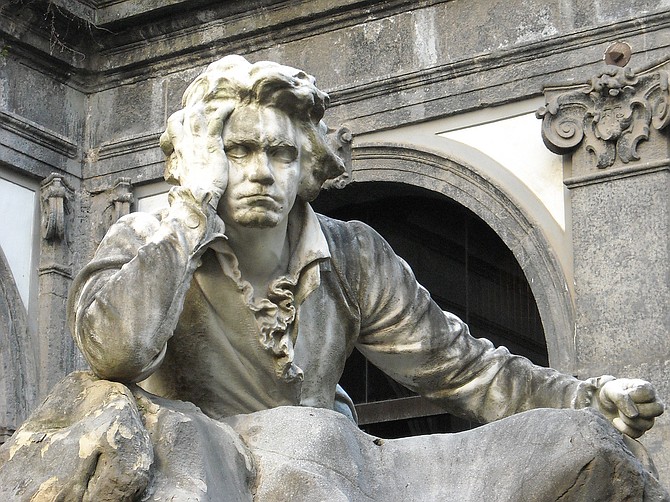 Facebook
Facebook
 X
X
 Instagram
Instagram
 TikTok
TikTok
 Youtube
Youtube

As I scrolled through the Flipboard app checking out various articles on classical music, the “typical” quality of the topics became oppressive. There were a few articles on presenting classical music in new ways which, alas, are rarely new ways unless telepathy is involved or perhaps headphones that attach to the audience’s foreheads trying to access our leftover sonar ducts from our ancient aquatic predecessors.
There were a few interviews that pushed the limits of pedestrian interactions, a few upcoming concert notifications, the obligatory “How to make classical music cool” titles, and then something interesting in Minnesota.
The Minnesota Orchestra had scheduled only Beethoven for the month of January. They performed all the symphonies and all the piano concertos. The average attendance was at 95 percent capacity.
This type of marathon doesn’t fall under the category of new ways to present classical music, it falls under effective ways to present classical music — at least in Minnesota. Haven’t people heard enough of Beethoven symphonies? That was the criticism when the Minnesota Orchestra’s schedule was announced.
No, people have not heard enough of Beethoven’s symphonies. Here’s one way of looking at it. I and thousands if not hundreds of thousands of people have heard Beethoven’s symphonies more than Beethoven heard them, notwithstanding his loss of hearing. The access to recordings makes this possible.
On second thought maybe that’s not even a relevant point since I’ve probably watched the original Star Trek more than Gene Roddenberry did. This takes us toward a different topic — the difference between creating culture and consuming culture. I’ll try to focus.
Why did this Minnesota Beethoven marathon work? There were factors working against it. The key demographic for this type of thing, the Minnesota snowbirds, were gone for the winter. Going out to a concert in Minnesota in the winter can’t be without some discomfort. Star Wars and The Revenant were in theaters. Everyone had spent all their extra money and credit on Christmas and New Years.
These are some reasonable excuses for poor symphony attendance. Yet the attendance was unreasonable.
I feel as if this boils down to Beethoven’s music itself. I don’t know if this type of attendance happens with a Brahms marathon or a Bruckner marathon or even a Mahler marathon.


As I scrolled through the Flipboard app checking out various articles on classical music, the “typical” quality of the topics became oppressive. There were a few articles on presenting classical music in new ways which, alas, are rarely new ways unless telepathy is involved or perhaps headphones that attach to the audience’s foreheads trying to access our leftover sonar ducts from our ancient aquatic predecessors.
There were a few interviews that pushed the limits of pedestrian interactions, a few upcoming concert notifications, the obligatory “How to make classical music cool” titles, and then something interesting in Minnesota.
The Minnesota Orchestra had scheduled only Beethoven for the month of January. They performed all the symphonies and all the piano concertos. The average attendance was at 95 percent capacity.
This type of marathon doesn’t fall under the category of new ways to present classical music, it falls under effective ways to present classical music — at least in Minnesota. Haven’t people heard enough of Beethoven symphonies? That was the criticism when the Minnesota Orchestra’s schedule was announced.
No, people have not heard enough of Beethoven’s symphonies. Here’s one way of looking at it. I and thousands if not hundreds of thousands of people have heard Beethoven’s symphonies more than Beethoven heard them, notwithstanding his loss of hearing. The access to recordings makes this possible.
On second thought maybe that’s not even a relevant point since I’ve probably watched the original Star Trek more than Gene Roddenberry did. This takes us toward a different topic — the difference between creating culture and consuming culture. I’ll try to focus.
Why did this Minnesota Beethoven marathon work? There were factors working against it. The key demographic for this type of thing, the Minnesota snowbirds, were gone for the winter. Going out to a concert in Minnesota in the winter can’t be without some discomfort. Star Wars and The Revenant were in theaters. Everyone had spent all their extra money and credit on Christmas and New Years.
These are some reasonable excuses for poor symphony attendance. Yet the attendance was unreasonable.
I feel as if this boils down to Beethoven’s music itself. I don’t know if this type of attendance happens with a Brahms marathon or a Bruckner marathon or even a Mahler marathon.
Comments